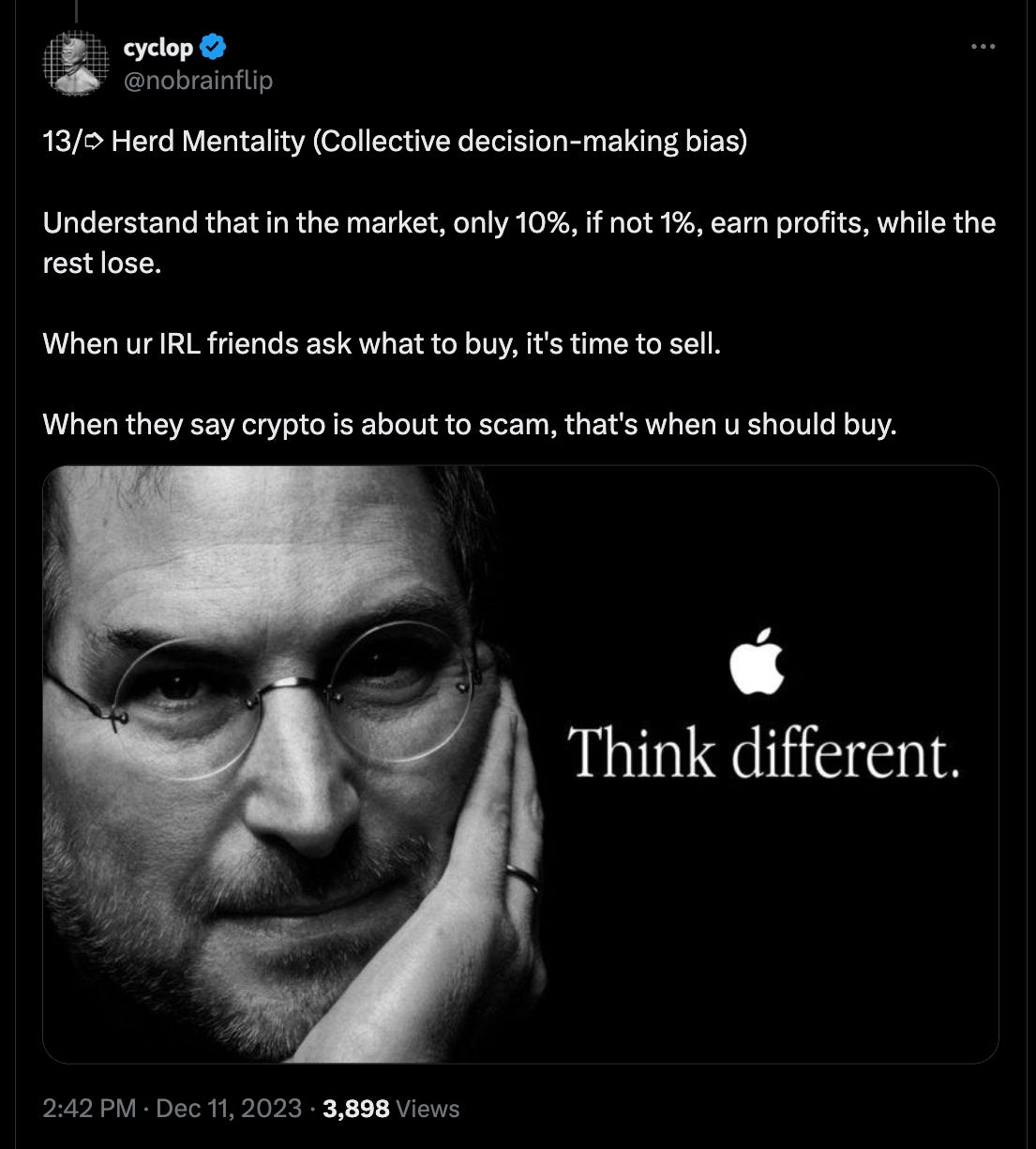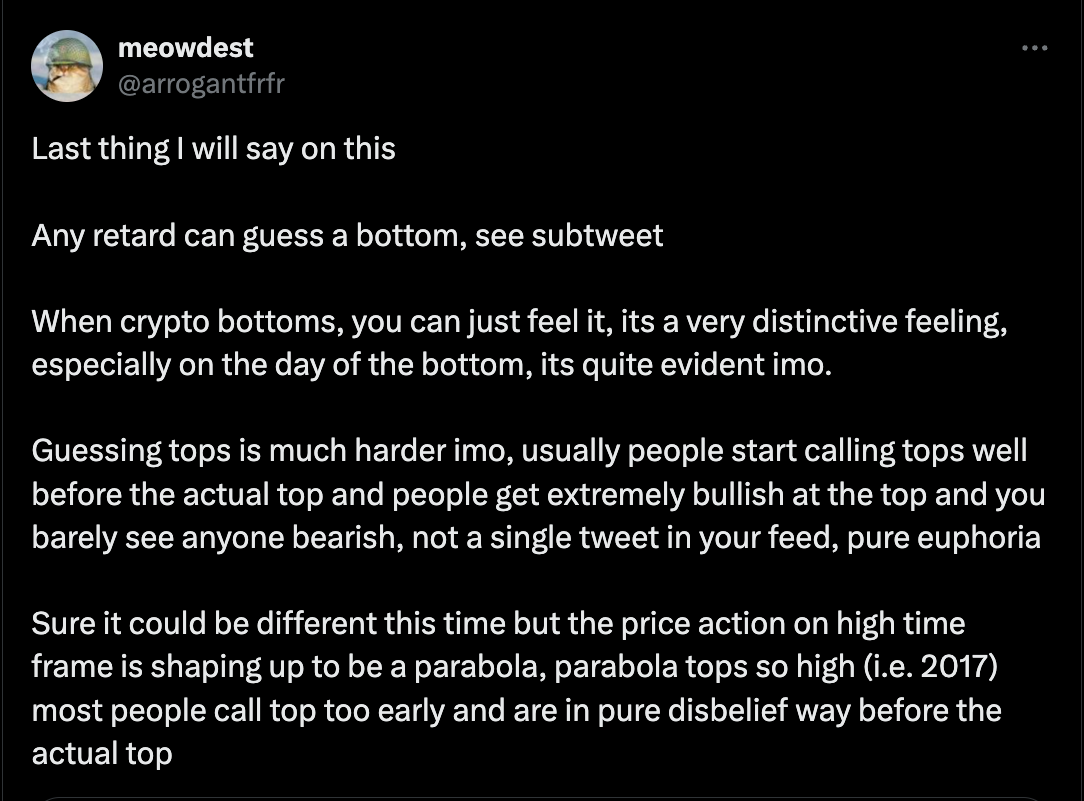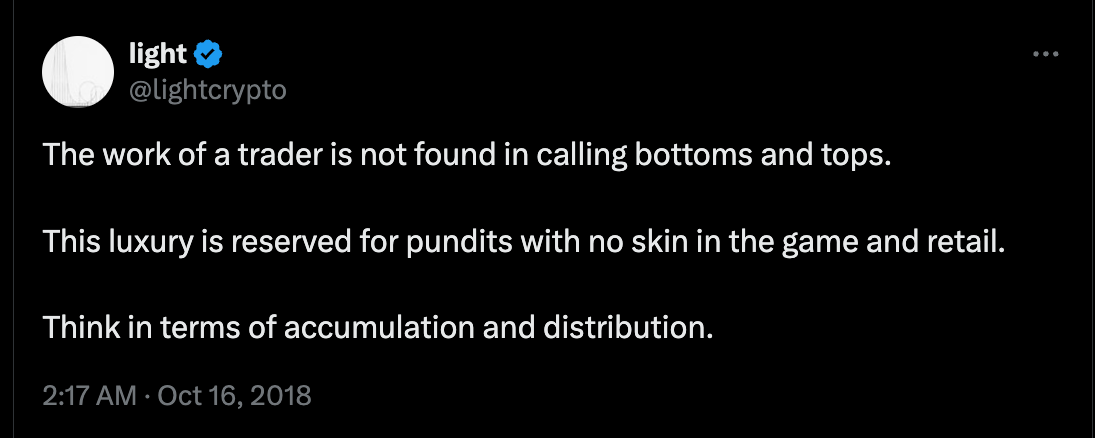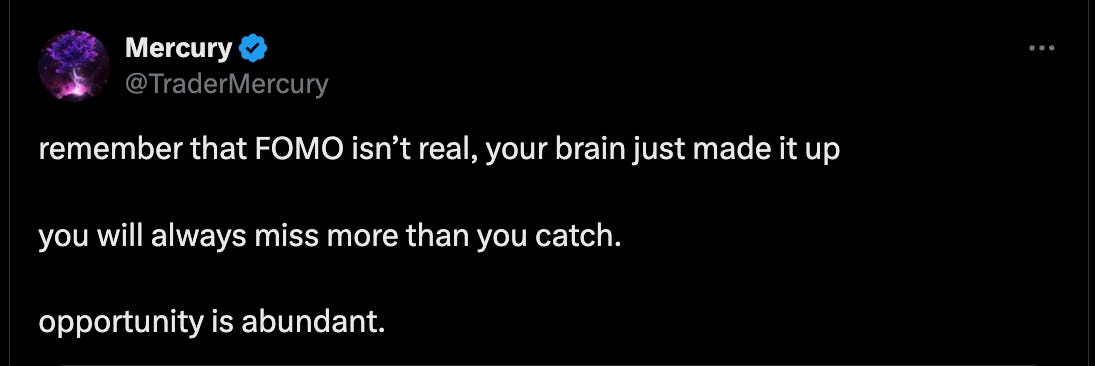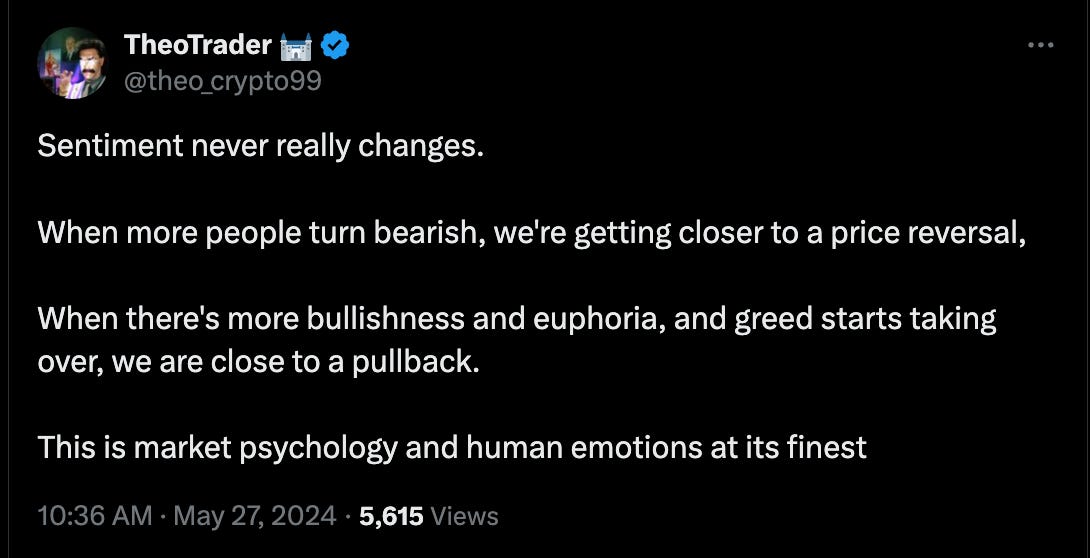Why are people bearish at the bottom, but bullish at the top?
Hey, friends!
Does anyone else here also think that human psychology is funny?
When crypto is down we're spending lots of time analyzing, trying to predict the exact bottom, and in general, being very careful.
But when the market is up we feel confident and just buy without much analysis at all. We are literally clicking the green buttons like there is no tomorrow.
Why are we that way?
Why are people bearish at the bottom, but bullish at the top?
Meet Fear and Greed - the two emotions that seem to drive most of our actions in the crypto market.
When fear takes over, it's all doom and gloom. Twitter/X feeds are filled with apocalyptic warnings of further crashes and calls for capitulation.
“This is the end, bye bye everyone, it's been nice to know y'all”
But when greed is in the driver's seat, euphoria reigns supreme. Suddenly everyone's an expert, confidently predicting new all-time highs just around the corner.
“If this coin will pump another 10,000%, I will be able to retire. LFG!”
So why does this happen?
Why do we get so cautious at bottoms but throw caution to the wind at tops?
A big part of it comes down to loss aversion - we feel the pain of losses much more acutely than the pleasure of gains.
We're also social creatures, and the fear of missing out (FOMO) is overwhelming. When everyone around us is getting rich quickly, it's hard to sit on the sidelines. The herd mentality takes over and we jump in, often right as the market is peaking. It's hard to sit tight when every day we hear about random folks getting ridiculously rich overnight.
On the flip side, when prices are tanking and the herd is running for the exits, our instinct is to join them. Holding on feels like fighting a losing battle. The prospect of further losses overshadows the potential for future gains in our minds.
Yes, calling bottoms and tops is a fool's errand for most.
By the time sentiment reaches extremes, the ship has usually already sailed. When your Twitter/X feed is all bulls at the top or all bears at the bottom, it's probably too late to act on those signals.
The irony is, that the best opportunities often lie in going against the crowd.
Buying when others are overwhelmed by fear, and selling when greed and euphoria are rampant. Yes, I know, easier said than done - it takes a strong stomach to bet against the herd.
But as one of the best investors ever said, be fearful when others are greedy, and greedy when others are fearful.
So if calling tops and bottoms based on sentiment is often a losing strategy, what's a better approach?
One way is to focus on your own analysis and have a plan.
Instead of trying to nail the perfect entry or exit, think about gradually accumulating on dips and taking profits on rallies.
Have a strategy and stick to it, regardless of what the herd is doing. Develop a thesis based on fundamentals, technicals, or your own assessment of market cycles, and let that guide your decisions.
You don't know what other people's “prophecies” are based on. Maybe that bull on X who screams for $100,000 by the end of a week is a 16-year-old who doesn't even know what funding rates are?
FOMO is a powerful force, and the temptation to abandon your plan and chase pumps can be strong. That's where discipline comes in.
One of the big mistakes I see myself falling for repeatedly is how I defend losing coins in my portfolio.
Holding them hoping to get out at break-even, even if I know that the smartest thing to do is cut the loss and invest it in something else.
Human psychology at its finest.
No one catches every opportunity.
I repeat: no one catches every opportunity.
There will always be that coin that goes 100x that you didn't buy, or the one you sold too early.
That's just the nature of markets. The key is not letting FOMO dictate your actions. Have the discipline to stick to your strategy, and trust that there will always be new opportunities.
By having a plan, staying disciplined, focusing on your own analysis rather than the herd's, and keeping a long-term perspective, you can aim to buy low and sell high - not the other way around.
It's not easy, but it's the mindset that separates the profitable few from the unsuccessful many in the wild world of crypto.
Ultimately, the goal is to take emotion out of the equation as much as possible. Fear and greed may be unavoidable human responses, but we don't have to let them control our every move in the market.
Let’s break it down:
Professionalism means having a plan and sticking to it, even when emotions are running high.
Consistency is about applying your strategy day in and day out, not just when it's easy.
Discipline is resisting the urge to deviate from your plan when FOMO strikes or fear grips the market.
Repetition is putting in the screen time and doing the work, even when it feels tedious.
And perhaps most importantly, the ability to overcome repeated failure and disappointment is essential, because no strategy is perfect and losses are a part of the game.
So why do most traders struggle with this? Why do they get bearish at bottoms and bullish at tops, even when they know better?
A big part of it is the difficulty of truly internalizing these basic yet essential principles. It's one thing to understand the concepts intellectually, but another to apply them consistently in the heat of the moment.
That Warren Buffett’s quote about being greedy when others are fearful rings again.
But in practice, it's incredibly hard to buy when blood is running in the streets and your portfolio is down 50%. Similarly, we know we should be cautious when euphoria reigns, but the allure of quick gains is powerful when everyone around us seems to be getting rich effortlessly.
How can one sit tight seeing headlines like “high schooler made $1,000,000 overnight” a few times a day?
This is why having a strategy and sticking to it is so important. If your plan is to accumulate on dips, then you buy when prices are down and sentiment is bearish, regardless of how you feel.
If your plan is to take profits when your targets are hit, you sell portions on the way up even if it feels like the rally could keep going forever.
Catching exact bottoms and tops might be satisfying for the ego, but it's not a reliable way to build long-term wealth. It's better to focus on executing your plan over and over again, even if it means missing some of the very best days.
Slow and steady approach tends to win the race in investing.
But even the best plans can't completely eliminate the impact of psychology on our trading. We are emotional creatures, and we will make mistakes.
The key is to learn from those mistakes, dust ourselves off, and keep going.
Every trader has bad days, bad weeks, even bad months. The ones who succeed in the long run are those who can bounce back from the inevitable setbacks and disappointments. They're the ones who can keep executing their strategy even when it's hard, who can resist the siren call of FOMO that is at like thousands decibels and the paralyzing grip of fear stronger than professional arm-wrestlers.
So next time you find yourself feeling overwhelmingly bearish or irrationally exuberant, take a step back.
Remember that the herd is usually wrong at extremes.
Remember your plan, and the work you put in to craft it.
Remember that discipline is the key to long-term success, and that every setback is an opportunity to learn and improve.
Stay rational out there anon, and may the gains be with you!
And remember: be fearful when others are greedy and be greedy only when others are fearful!
Stay safe.
That’s it for today, anon!
Want To Sponsor This Newsletter? 🕴️
Send me a DM on Twitter: https://twitter.com/Route2FI or reply to this email. I have a sponsorship deck I can send you.
Join My Free Telegram Channel 🐸
I’ve launched a free Telegram channel where I share tweets, threads, articles, trades, blog posts, etc. that I find interesting within crypto.
Join it for free here: https://t.me/cryptogoodreads





